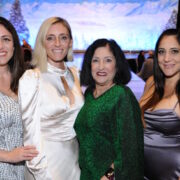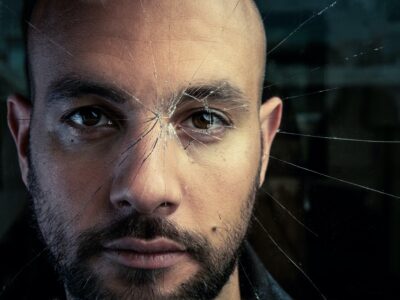By Rabbi-Cantor Cheri Weiss
After nearly a year of Covid-induced delay, last month my daughter, Emma, finally married her beloved Tyler. These two beautiful souls (both now 27) have been together since high school. I had been hoping they would ask me to officiate but did not want to pressure them in case they had other plans. I was so relieved that very soon after their engagement, they did ask, and I enthusiastically accepted.
There are many beautiful rituals associated with a Jewish wedding, all of which have evolved over the centuries. While the specifics vary among denominations and cultures, the basic customs — with some exceptions — span across these lines. For example, the ceremony is held under a chuppah, which means “covering.” This canopy — open on all four sides so all can see — creates a sacred space for this blessed moment in time. It consists of a cloth (or tallit) stretched out over four poles and is meant to symbolize the new Jewish home that the married couple will create.
Prior to the start of the ceremony, the couple, the clergyperson, as well as two witnesses sign what is known as the Ketubah (Wedding Contract), which is traditionally also read aloud during the ceremony. Historically, this document was meant to outline a groom’s rights and responsibilities to his bride, including monetary obligations in the event of a divorce. Ketubot are generally beautifully artistic and often ornate. The language may be written in Aramaic or Hebrew and may also include the native language of the couple. Emma and Tyler chose to include the traditional Hebrew as well a less-traditional English version that spoke to their hearts. It included these vows: “We joyfully enter into this covenant and accept all its obligations. Set me as a seal upon your heart like the seal upon your hand. Our promise to each other, in the presence of our family and friends, is valid and binding.”
Historically, Jewish wedding ceremonies did not include the exchange of rings. In fact, no mention is made of wedding rings in the Bible, the Mishnah or the Talmud. Nevertheless, it is now an integral part of the ceremony. Traditionally, the groom places the ring on the index finger of the bride and recites in Hebrew, “Behold, with this ring you are consecrated to me according to the law of Moses and Israel.” In non-Orthodox weddings, the other partner may reciprocate with a ring as well. The ring is traditionally meant to be simple and without adornment, perhaps as a symbol of the purity between the partners.
During the ceremony, there is a recitation of the Sheva Brachot (Seven Blessings). It opens with a blessing over the wine, symbolizing joy, celebration, and the sanctification of this holy occasion. Themes of these blessings include creation, redemption, and paradise, and reflect wishes for the newly-married couple to enjoy a long life filled with the redemptive power of personal love.
As anyone knows who has ever attended a Jewish wedding (or even seen one in the movies), no Jewish wedding would be considered complete without the final smashing of a glass. One reason offered for this act is borne of compassion: to remind us that there are still broken souls in this world in need of healing. We include them in our thoughts, in effect asking God to make their lives whole again and bring to them the happiness that this couple is enjoying.
The inclusion of these and other Jewish rituals into a wedding ceremony invites centuries of Jewish heritage and history into the new marriage. Combining ritual with contemporary practices — such as writing their own vows — allows the couple to place themselves on the Jewish continuum in their own unique way.









Comments